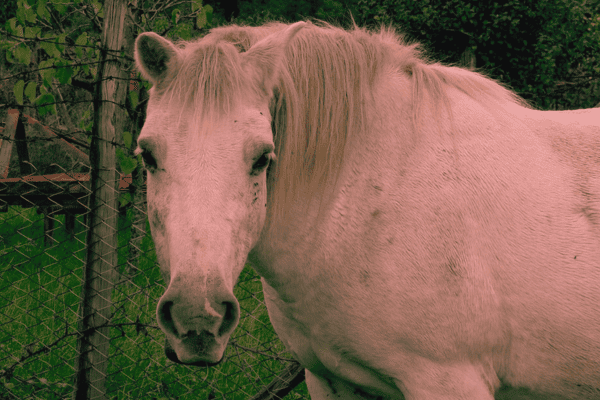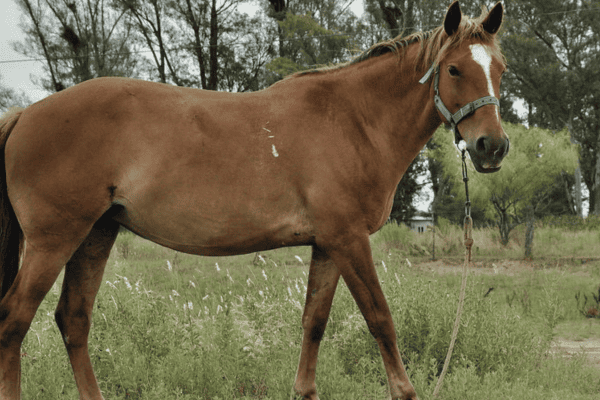The Salerno Horse, an exquisite and less common breed, continues to be a cherished selection for various riding disciplines, prominently featuring in both leisure activities and the competitive sphere of equestrian sports.
Esteemed for their multifaceted utility, these horses have historically been employed as both sophisticated riding steeds and in cavalry roles, showcasing their adaptability and prowess.
Their proficiency in mounted sports further accentuates their standing as outstanding sports horses. With a skill set that spans a broad spectrum, Salerno Horses are characterized by their keen intelligence and cooperative demeanor.
They are widely recognized for their congenial disposition, effectively catering to the varied demands of equestrian enthusiasts and horse owners. The breed exemplifies a harmonious blend of nimbleness, robustness, and tractability, solidifying its prestigious position in the realm of equine breeds.
History:
The Salerno Horse has an extensive and vibrant past dating back to Southern Italy’s idyllic countryside, where its roots began. Over time, its development was shaped by royal influence, geographical origins, genetic progress and an emphasis on heritage breeding that molded into distinct characteristics that define its identity today.
Royal Patronage and Geographic Roots
Royal Approval: The Salerno Horse’s rise in fame can be traced back to its royal patronage during King Charles III’s rule over both Naples and Spain, who played an instrumental role in elevating its status.
Campania as the Cradle: Eboli, Battipaglia and Paestum in Salerno Province within Campania region have long been recognized as being the birthplace of this breed of horse. Here the fertile lands and favorable climate contributed significantly to its development.
Early Breeding Practices
Unstructured Beginnings: Before 1780, breeding these horses wasn’t done under any formal system. Instead, breeders at Persano Stud selectively bred horses based on desired traits to establish its foundation for future breeding practices and further establish this breed’s legacy.
Genetic Foundations: The Salerno Horse’s genetic foundation was heavily shaped by its blend of Neapolitan, Spanish, and Oriental (Arabian) horses – contributing significantly to its robustness and versatility.
The Persano Stud Era:
Foundation Sires: At Persano Stud, three Lipizzan stallions that have become iconic foundation sires for Salerno Horse breed have been utilized extensively as foundation sires.
Transition into Military Use: After the closure of Persano Stud in 1864, many Salerno Horses were transferred to Grosseto’s Italian Army Remount Station as their primary purpose shifted towards military and army use.
The Breed’s Evolution
Decline and Mechanization: With mechanization’s advent in the early 20th century, their numbers gradually decreased due to less need for working horses.
Crossbreeding Milestones: The Salerno Horse underwent dramatic changes through crossbreeding.
Spanish Influence: Under Spanish control, they were crossbred with Andalusian and Oriental breeds to further improve their status as saddle horses.
English Bloodlines: Beginning in the late 19th century, introduction of purebred English horses radically transformed Salerno appearance and utility for army roles.
20th Century Refinement: With the introduction of Thoroughbred and Hackney bloodlines during the 20th century, their sizes were enhanced as work breeds.
Establishment of the Morese Stud Farm
A New Breeding Chapter: In the 20th century, near Persano Stud was the ‘Morese Stud’ – instrumental in further developing and maintaining Salerno horses today and guaranteeing their legacy and relevance for future generations.
The Salerno Horse’s journey from its birth in Southern Italy’s plains to becoming an esteemed breed encapsulates centuries of royal influences, strategic breeding decisions and evolutionary adaptation.
Not only is this breed an important symbol of Italian equestrian history but its rise also illustrates how human intervention and natural selection coexist to form breeds today.
Characteristics of Salerno Horses:
Salerno horses are known for their strong build, agility and endurance. Generally they possess strong yet compact bodies with deep chests and well-muscled backs that make them suitable for heavy work and long journeys. Furthermore, their temperaments make them great choices both as companions and work companions.

Cultural Impact:
For centuries, the Salerno Horse has been an icon of its region’s identity. Celebrated through folklore, art, literature and festivals as an emblematic representation of resilient, adaptable and proud citizens, its presence has played an essential role in local festivals and ceremonies, often sporting traditional attire to reflect its rich history and rich traditions.

Modern Status:
Today, the Salerno Horse is considered rare, with efforts being taken to preserve its heritage. Not only are these majestic horses part of history; they serve as living links with past for residents of Salerno. Breed enthusiasts and historians work tirelessly to make sure these magnificent animals continue thriving and are recognized for their unique place within equestrian world.

